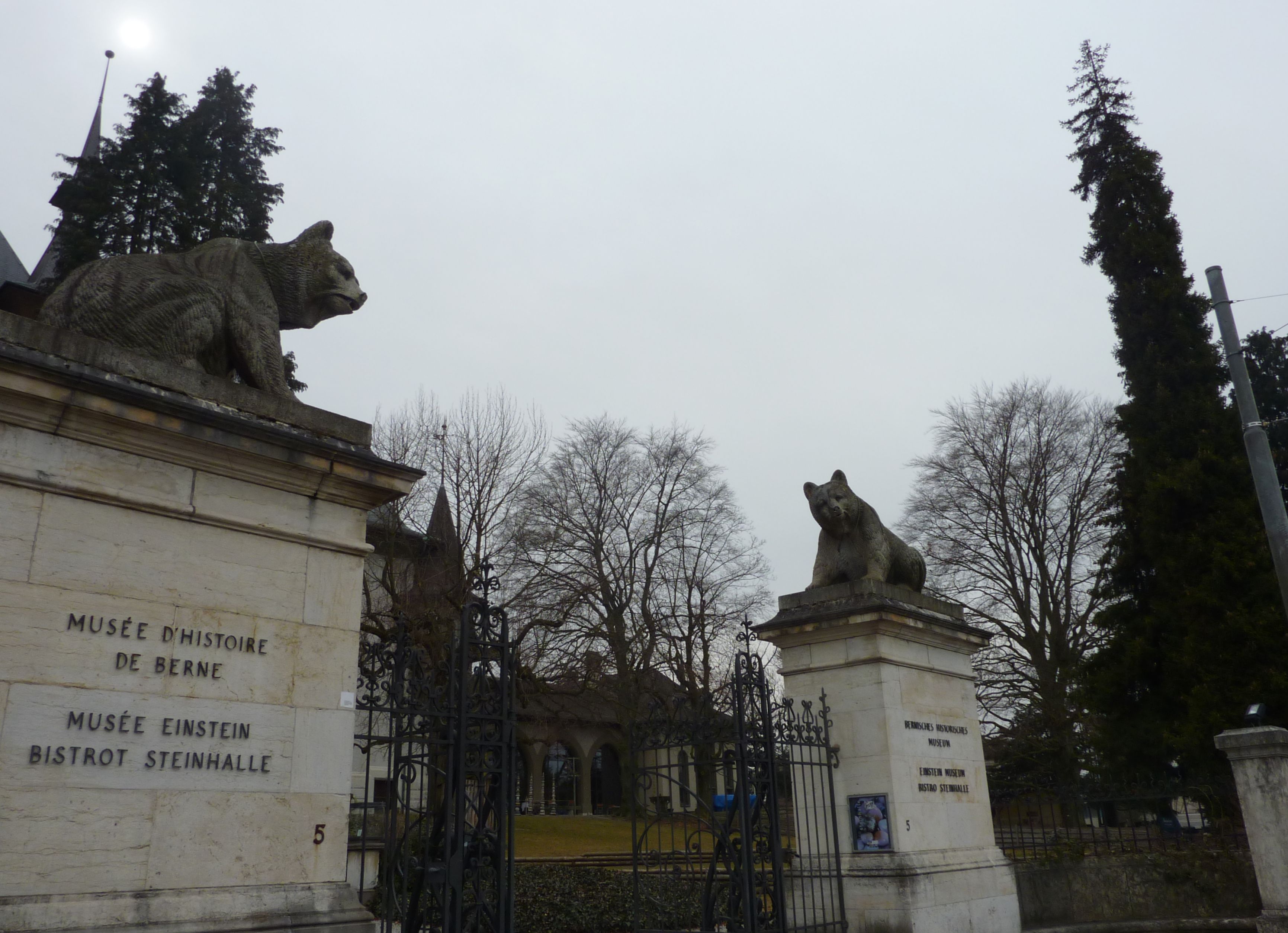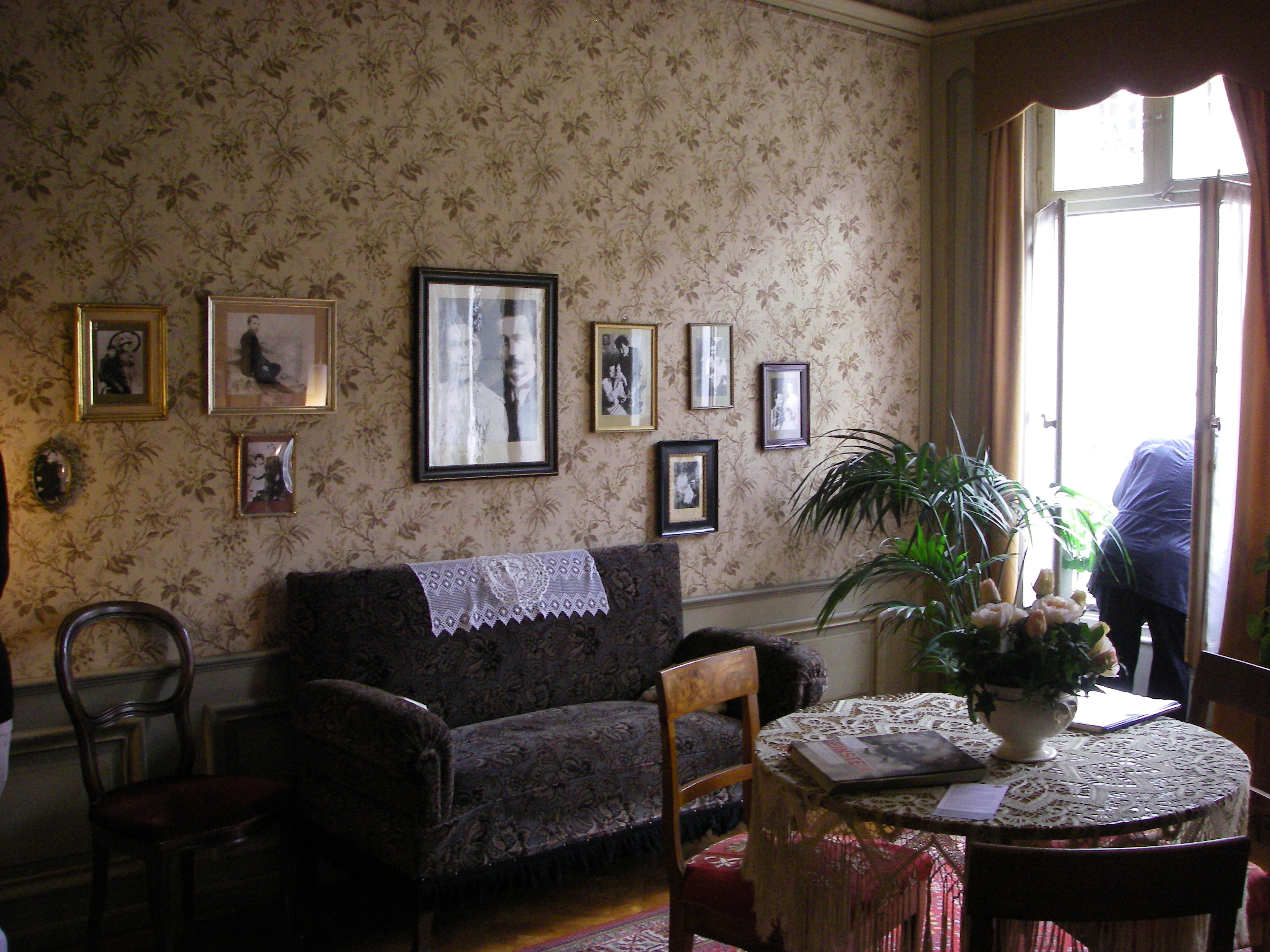|
Historical Museum Of Bern
The Bern Historical Museum (german: Bernisches Historisches Museum, french: Musée d’Histoire de Berne) is the second largest historical museum in Switzerland. It was designed by the Neuchâtel architect André Lambert and built in 1894. Since it was initially conceived as the Swiss National Museum (which the city of Zurich was later chosen to host), the architect took as his model various historic castles from the 15th and 16th centuries. An extension to the original museum building was completed in 2009. The museum contains collections related to the history of Bern from prehistoric times to the present and other artefacts on permanent display from Asia, Oceania, America and Egypt. One of the most remarkable items in the collection is the Muri statuette group, a group of six Gallo-Roman bronze figurines. The Bern Historical Museum is a heritage site of national significance. Over the museum's entrance is a glass mosaic, "The Age of History", featuring the figures of Po ... [...More Info...] [...Related Items...] OR: [Wikipedia] [Google] [Baidu] |
Helvetiaplatz (Bern)
Helvetiaplatz may refer to several squares named after Helvetia in Switzerland: * in Basel; see Helvetiaplatz (Basel) * in Bern; see * in Luzern; see Helvetiaplatz (Luzern) * in Zürich Zürich () is the list of cities in Switzerland, largest city in Switzerland and the capital of the canton of Zürich. It is located in north-central Switzerland, at the northwestern tip of Lake Zürich. As of January 2020, the municipality has 43 ...; see Helvetiaplatz (Zürich) {{disambig ... [...More Info...] [...Related Items...] OR: [Wikipedia] [Google] [Baidu] |
Muri Statuette Group
The Muri statuette group is a group of six Gallo-Roman bronze figurines found in 1832 in Muri bei Bern, Switzerland. The group includes representations of the gods Jupiter, Juno, Minerva, Naria, Artio and of a Lar. The ensemble includes the only known representations of Artio and Naria, and is one of the more significant items in the collection of the Historical Museum of Bern. History The statues are believed to be the idols worshiped at the temple of the ''regio Arurensis'' – the religious association of the region of the river Aar – whose name is inscribed on the pedestal of the Naria statue. The temple belonged to a large Roman estate. At an unknown time, probably to protect them against some threat, the statues were removed from the temple, locked in a chest and brought to a nearby building in whose ruins they were found 1,500 years later, in May 1832. Together with a number of household effects from the Roman period, the statues were found during an excavation for a ... [...More Info...] [...Related Items...] OR: [Wikipedia] [Google] [Baidu] |
History Museums In Switzerland
History (derived ) is the systematic study and the documentation of the human activity. The time period of event before the invention of writing systems is considered prehistory. "History" is an umbrella term comprising past events as well as the memory, discovery, collection, organization, presentation, and interpretation of these events. Historians seek knowledge of the past using historical sources such as written documents, oral accounts, art and material artifacts, and ecological markers. History is not complete and still has debatable mysteries. History is also an academic discipline which uses narrative to describe, examine, question, and analyze past events, and investigate their patterns of cause and effect. Historians often debate which narrative best explains an event, as well as the significance of different causes and effects. Historians also debate the nature of history as an end in itself, as well as its usefulness to give perspective on the problems of the p ... [...More Info...] [...Related Items...] OR: [Wikipedia] [Google] [Baidu] |
Einsteinhaus
The Einsteinhaus (Einstein House) is a museum and a former residence of Albert Einstein. It is located on Kramgasse No. 49 in Bern, Switzerland. A flat on the second floor of the house was occupied by Einstein, his wife Mileva Marić, and their son Hans Einstein from 1903 to 1905. The ''Annus Mirabilis'' papers, which presented Einstein's theory of relativity and contributed substantially to the foundation of modern physics, were written here and published in the ''Annalen der Physik''. During this time Einstein worked at the Federal Institute of Intellectual Property. The living conditions of Einstein and his family are shown accurately in the apartment on the second floor with furniture from that time. Einstein's biography and his life's work are presented on the third floor. A smaller permanent exhibition is located at the Historical Museum of Bern The Bern Historical Museum (german: Bernisches Historisches Museum, french: Musée d’Histoire de Berne) is the second larges ... [...More Info...] [...Related Items...] OR: [Wikipedia] [Google] [Baidu] |
Relativity Theory
The theory of relativity usually encompasses two interrelated theories by Albert Einstein: special relativity and general relativity, proposed and published in 1905 and 1915, respectively. Special relativity applies to all physical phenomena in the absence of gravity. General relativity explains the law of gravitation and its relation to the forces of nature. It applies to the cosmological and astrophysical realm, including astronomy. The theory transformed theoretical physics and astronomy during the 20th century, superseding a 200-year-old theory of mechanics created primarily by Isaac Newton. It introduced concepts including 4-dimensional spacetime as a unified entity of space and time, relativity of simultaneity, kinematic and gravitational time dilation, and length contraction. In the field of physics, relativity improved the science of elementary particles and their fundamental interactions, along with ushering in the nuclear age. With relativity, cosmology and astrophysi ... [...More Info...] [...Related Items...] OR: [Wikipedia] [Google] [Baidu] |
Albert Einstein
Albert Einstein ( ; ; 14 March 1879 – 18 April 1955) was a German-born theoretical physicist, widely acknowledged to be one of the greatest and most influential physicists of all time. Einstein is best known for developing the theory of relativity, but he also made important contributions to the development of the theory of quantum mechanics. Relativity and quantum mechanics are the two pillars of modern physics. His mass–energy equivalence formula , which arises from relativity theory, has been dubbed "the world's most famous equation". His work is also known for its influence on the philosophy of science. He received the 1921 Nobel Prize in Physics "for his services to theoretical physics, and especially for his discovery of the law of the photoelectric effect", a pivotal step in the development of quantum theory. His intellectual achievements and originality resulted in "Einstein" becoming synonymous with "genius". In 1905, a year sometimes described as his ' ... [...More Info...] [...Related Items...] OR: [Wikipedia] [Google] [Baidu] |
Historic Museum Bern2
History (derived ) is the systematic study and the documentation of the human activity. The time period of event before the invention of writing systems is considered prehistory. "History" is an umbrella term comprising past events as well as the memory, discovery, collection, organization, presentation, and interpretation of these events. Historians seek knowledge of the past using historical sources such as written documents, oral accounts, art and material artifacts, and ecological markers. History is not complete and still has debatable mysteries. History is also an academic discipline which uses narrative to describe, examine, question, and analyze past events, and investigate their patterns of cause and effect. Historians often debate which narrative best explains an event, as well as the significance of different causes and effects. Historians also debate the nature of history as an end in itself, as well as its usefulness to give perspective on the problems of the p ... [...More Info...] [...Related Items...] OR: [Wikipedia] [Google] [Baidu] |
Léo-Paul Robert
Léo-Paul Samuel Robert (19 March 1851 - 10 September 1923), also known as Paul Robert, was a Swiss painter, known for his depictions of birds and other wildlife. Early life Paul Robert was born in Biel/Bienne, Switzerland, on 19 March 1851, to , who, like his brother Louis Léopold Robert was a painter. Paul trained under his father, and then, in 1869, at the Munich Academy of Arts. After the death of his father in December 1871, he visited Verona, Venice, Ravenna, Bologna and Florence. Career After initially painting allegories, Robert turned his talents next to landscapes, and eventually to watercolours of birds and caterpillars. His painting won a gold medal when exhibited at the Paris Salon in 1877. From 1886 to 1894, he was responsible for the decoration of the staircase at the (now the ), comprising three monumental murals; still extant. He illustrated an edition of Jeremias Gotthelf's 1842 book ''The Black Spider''. From 1891 to 1897 he was a member of t ... [...More Info...] [...Related Items...] OR: [Wikipedia] [Google] [Baidu] |
Mosaic
A mosaic is a pattern or image made of small regular or irregular pieces of colored stone, glass or ceramic, held in place by plaster/mortar, and covering a surface. Mosaics are often used as floor and wall decoration, and were particularly popular in the Ancient Roman world. Mosaic today includes not just murals and pavements, but also artwork, hobby crafts, and industrial and construction forms. Mosaics have a long history, starting in Mesopotamia in the 3rd millennium BC. Pebble mosaics were made in Tiryns in Mycenean Greece; mosaics with patterns and pictures became widespread in classical times, both in Ancient Greece and Ancient Rome. Early Christian basilicas from the 4th century onwards were decorated with wall and ceiling mosaics. Mosaic art flourished in the Byzantine Empire from the 6th to the 15th centuries; that tradition was adopted by the Norman Kingdom of Sicily in the 12th century, by the eastern-influenced Republic of Venice, and among the Rus. Mosaic fell ou ... [...More Info...] [...Related Items...] OR: [Wikipedia] [Google] [Baidu] |
Egypt
Egypt ( ar, مصر , ), officially the Arab Republic of Egypt, is a transcontinental country spanning the northeast corner of Africa and southwest corner of Asia via a land bridge formed by the Sinai Peninsula. It is bordered by the Mediterranean Sea to the north, the Gaza Strip of Palestine and Israel to the northeast, the Red Sea to the east, Sudan to the south, and Libya to the west. The Gulf of Aqaba in the northeast separates Egypt from Jordan and Saudi Arabia. Cairo is the capital and largest city of Egypt, while Alexandria, the second-largest city, is an important industrial and tourist hub at the Mediterranean coast. At approximately 100 million inhabitants, Egypt is the 14th-most populated country in the world. Egypt has one of the longest histories of any country, tracing its heritage along the Nile Delta back to the 6th–4th millennia BCE. Considered a cradle of civilisation, Ancient Egypt saw some of the earliest developments of writing, agriculture, ur ... [...More Info...] [...Related Items...] OR: [Wikipedia] [Google] [Baidu] |
Bern
german: Berner(in)french: Bernois(e) it, bernese , neighboring_municipalities = Bremgarten bei Bern, Frauenkappelen, Ittigen, Kirchlindach, Köniz, Mühleberg, Muri bei Bern, Neuenegg, Ostermundigen, Wohlen bei Bern, Zollikofen , website = www.bern.ch Bern () or Berne; in other Swiss languages, gsw, Bärn ; frp, Bèrna ; it, Berna ; rm, Berna is the ''de facto'' capital of Switzerland, referred to as the "federal city" (in german: Bundesstadt, link=no, french: ville fédérale, link=no, it, città federale, link=no, and rm, citad federala, link=no). According to the Swiss constitution, the Swiss Confederation intentionally has no "capital", but Bern has governmental institutions such as the Federal Assembly and Federal Council. However, the Federal Supreme Court is in Lausanne, the Federal Criminal Court is in Bellinzona and the Federal Administrative Court and the Federal Patent Court are in St. Gallen, exemplifying the federal nature of the Confederation. ... [...More Info...] [...Related Items...] OR: [Wikipedia] [Google] [Baidu] |


.jpg)

.jpg)
